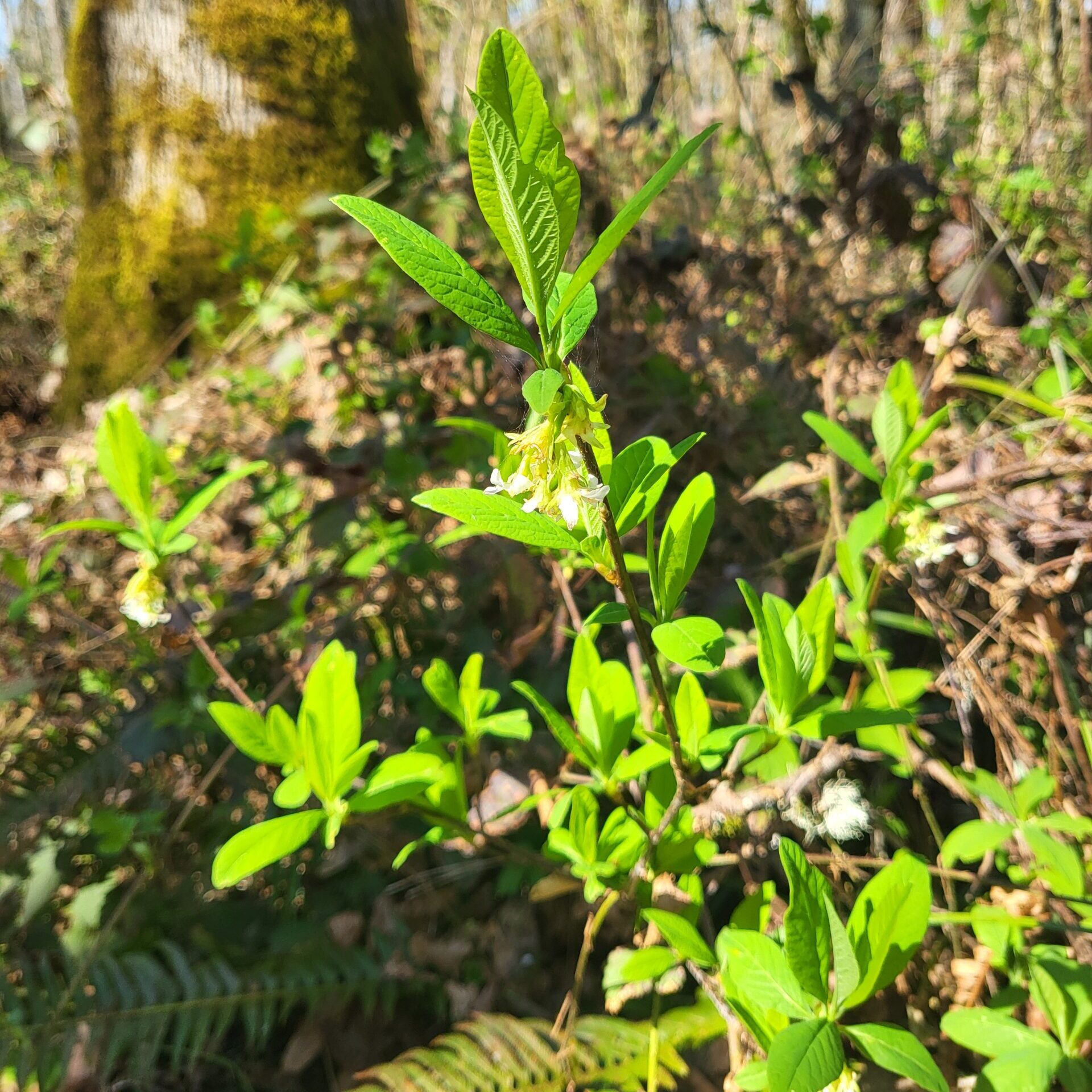Roses are red, violets are…yellow?
When you hear the word ‘violet,’ do you automatically think of a purple or blue flower? Most people do, but violets actually come in a wide variety of colors!
What are stream violets?
Oregon’s native stream violet (Viola glabella) is a bright, sunny yellow, and it’s one of our earliest spring wildflowers. These tiny flowers grow in shady spots, usually near water. They spread out using rhizomes (aka roots), so they form a little mat over the ground called a groundcover, and they’re perennial, which means the same plants come back year after year.

When I’m identifying a stream violet, I look for two things:

#1 The flower shape
To me, violet flowers look like little faces. Two petals that stick up like ears, two that stick out like cheeks, and one that sticks down like a chin. I probably got this idea from watching Fantasia as a kid, but it really works!

#2 The leaf shape
Stream violets have heart-shaped leaves, which makes them easy to identify! The leaf texture is thin and delicate, and they rip easily. Also look for deep veins that come out of the center point of the heart.
Let’s eat some flowers!
Every part of the plant, from roots to leaves to flowers, can be eaten raw. Sometimes fancy restaurants even use violets (usually ornamental varieties) as decorative additions to salads! Just don’t eat too many, though—violets (especially the roots) contain saponins, which means they have a soapy, slimy quality to them. If you eat too many, they could upset your stomach or even work as a laxative.
Disclaimer:
Please don’t eat any foraged/wild plant foods unless you’re 100% sure that you’ve identified the plant correctly.
Stream Violet Stats
- Scientific Name: Viola glabella
- Common Names: stream violet, pioneer violet
- Plant Family: the violet family (Violaceae)
- Origin: native to Oregon and the PNW
- Ecosystem: forests and streamsides, partial shade
- Leaves: heart-shaped
- Flowers: five petals, ‘face-shaped’
- Edible Uses: roots, leaves, and flowers edible in moderation







